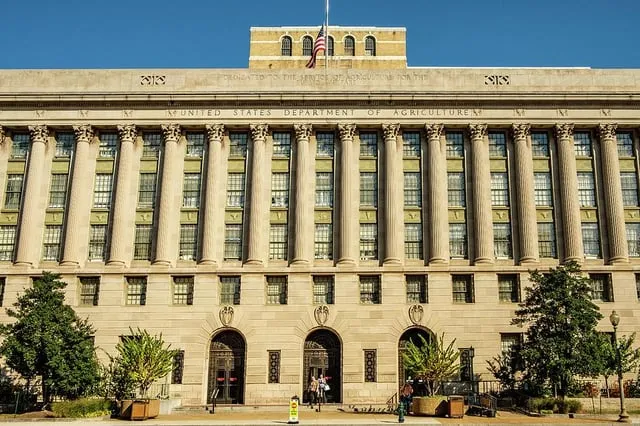USDA’s Dramatic Restructuring: What it Means for Employees and the Agricultural Sector
The United States Department of Agriculture (USDA) is in the midst of a significant reorganization that has triggered widespread concerns and backlash among employees, industry stakeholders, and policymakers alike. According to statements released by the USDA, the plan calls for the relocation of more than half of its employees currently working in the Washington D.C. area. This initiative comes during a time of heightened scrutiny regarding federal workforce management and aims to reshape the department’s operational focus.
Understanding the USDA’s Reorganization Plan
The USDA has stated that this move is intended to streamline operations, encourage efficiency, and ultimately enhance service delivery to rural communities. The department has proposed shifting a significant portion of its workforce away from traditional urban settings and into rural areas. This plan is likely to affect over 2,500 employees, with various agencies and divisions within the USDA, including the Agricultural Research Service and the Animal and Plant Health Inspection Service, facing substantial changes.
The reorganization plan outlines that many employees will be moved to states like Kansas, North Dakota, and Nebraska, which are seen as areas more central to the agriculture industry. The USDA argues that this shift will allow federal employees to better engage with the communities and industries they serve, providing a more direct line of communication with agricultural producers and stakeholders.
The Outcry from Employees and Public Reaction
However, the announcement has been met with significant backlash. Many employees of the USDA, unions, and advocacy groups have raised concerns about the relocation’s implications. A common fear among employees is that the move will strip away the essential urban infrastructure and support systems that are vital for their work and personal lives. Union leaders have attacked the decision as a gross mismanagement of resources and an inappropriate response to long-standing organizational issues.
Critics have also pointed to the potential economic impacts on D.C. as a result of losing substantial segments of the federal workforce. Relocations could lead to job losses in service industries that support federal employees in the area, from the hospitality sector to transportation services. This perspective highlights the intertwined nature of federal employment and the local economies that support it.
Impact on Salaries and Workforce Morale
The USDA’s decision appears to be compounded by discussions surrounding salary adjustments. Reports indicate that some employees may face pay cuts if they accept positions in rural areas, where the cost of living and competitive salaries differ vastly from Washington D.C. Many are left feeling they are caught between a rock and a hard place: they can either accept lower-paying positions in areas they may not want to move to or risk losing their jobs entirely.
This has given rise to discussions about morale within the department. As federal employees debate their futures, job security and satisfaction are plummeting. Many employees who have invested years in their careers within the USDA feel betrayed by a plan that seemingly disregards their well-being and the department’s historical context. Concerns are also surfacing about employee retention, as highly skilled professionals may choose to leave the agency rather than abide by the terms of the reorganization.
Political Reactions and Legislative Implications
The proposed restructuring has drawn the attention of lawmakers, both in support of and opposed to USDA’s relocation plan. Some senators from rural states view the initiative positively, arguing it would strengthen ties between the USDA and agricultural communities. They believe that positioning more employees outside of D.C. will lead to improved collaboration and better responsiveness to regional agricultural challenges.
Conversely, representatives from metropolitan areas have pushed back against the organization’s plans, prioritizing the importance of having such federal agencies remain within urban centers where they have traditionally been embedded. Additionally, they express concern over possible adverse effects on supportive local economies and federal contracting relationships.
Potential Agricultural Implications
Beyond the immediate impacts on employees, the USDA’s reorganization raises significant questions about the department’s capacity to effectively respond to agriculture’s evolving needs. Many industry experts worry that this shift may lead to a disrupted flow of information and reduced capacity to balance urban and rural agricultural needs.
Critics fear that the focus on relocation might overshadow critical policy-making functions, such as initiatives to address climate change, food security, and agricultural innovation. These complex issues often require nuanced understanding and strategic coordination that could be jeopardized by relocating the workforce away from established networks and resources in D.C.
Future Considerations
As the USDA moves forward with its reorganization plans, the agency has promised to maintain an open dialogue with stakeholders, including employees, legislators, and the agricultural community. It is essential for the department to address employee concerns proactively, especially regarding job security, salary adjustments, and relocation logistics.
For the agricultural sector at large, it remains crucial to continue monitoring the USDA’s restructuring process closely. The intent behind these changes may indeed highlight a necessary shift towards a more localized and responsive federal service model. However, the practical ramifications for federal employees and the agricultural industry must not be underestimated or overlooked.
Conclusion: The Balance Between Change and Stability
In summary, the USDA’s plan to relocate a vast proportion of its D.C. area workforce has sparked a complex web of reactions, worries, and debates. The intention to realign the department’s focus with rural agricultural needs represents a significant strategic shift—but employee satisfaction, economic impacts, and the integrity of agricultural policy execution cannot be sacrificed in the process.
As discussions expand and plans wade through the waters of public opinion and policy implications, this will undoubtedly evolve into a pivotal moment for the USDA and its mission to serve American agriculture. Navigating this dance of change and stability will require transparency, empathy, and careful consideration on all fronts.







